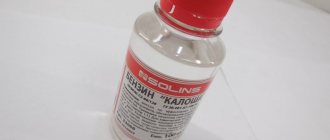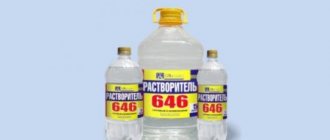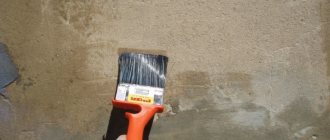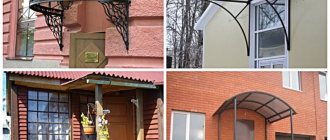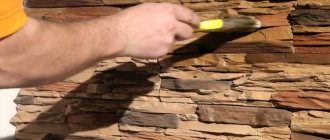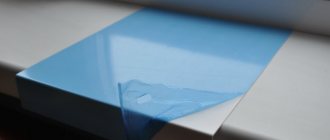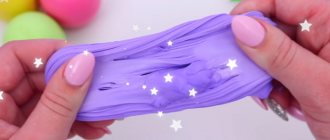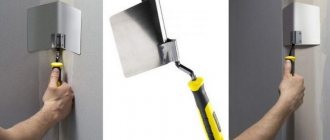- R-4
Various types of solvents are widely represented on the domestic market of paints and varnishes. They differ not only in price, but also in their main characteristics and areas of application. Proper selection of solvent allows for maximum efficiency and manufacturability of the process.
Description
A solvent is a liquid, solid or gaseous substance that, due to its chemical and physical properties, has the ability to dissolve other types of solid, liquid or gaseous substances.
When applied to paints and varnishes, a solvent is a rapidly evaporating chemical substance in liquid form or a mixture of similar substances. This composition is able to effectively act on viscous chemical substances, while forming a homogeneous product.
Solvents are intended to be added to paints and varnishes in order to give them the necessary consistency required for use. Some types of paints cannot be used without using solvents. In particular, this applies to highly concentrated dyes stored in specialized containers.
A high quality solvent must meet the following requirements:
- Possess high miscibility with the main dye. In this case, the resulting mass must be homogeneous; the presence of clots and uneven color is unacceptable.
- The solvent must have a high degree of volatility. After applying paint or varnish to the work surface, the solvent should evaporate as quickly as possible.
- During the process of mixing solvent and paint, the substances should not enter into a chemical reaction.
- The properties of the solvent should not change when exposed to water.
Operating principle
To understand this process, you need to know which component is the main one in a particular coloring composition. Consequently, the solvent is selected with a similar composition. When you add it to dried paint, it will complement its composition and replenish the evaporated part of the base. Thus, you will be able to achieve almost its original condition. The main thing is to thoroughly mix the components together, reaching to the very bottom, so that the solvent does not float on the surface and the composition becomes uniform in thickness.
Basically, all interior paints are sold ready-to-use and do not require additional dilution. Only in the cases described above. There are a few simple rules that you can follow to achieve the best results:
- The dishes in which you will do the work must be clean. No dried paint fragments from previous uses and no small debris. Rinse it with water and wipe dry.
- The most suitable containers are those that have a cylindrical shape with smooth walls. In such a vessel you can move the components as evenly as possible.
- If we are talking about paints that must be diluted with water, then its part should be no more than 10% of the total mass.
- In alkyd enamels that will be used for exterior work, it is necessary to add no more than 3% of the total amount of liquid.
- For interior work – no more 5%.
If you add too much solvent, your paint will not adhere and will simply run off the surface being treated. This is especially true for vertical planes, on which drips instantly form. At the same time, the performance indicator and service life of the coating are reduced Let's take a closer look at the most common types of interior paints and the types of solvents suitable for them.
Application
The main function of the solvent is to provide convenience when working with paints and varnishes. Giving the dyes the desired consistency before direct application to the surface allows not only to achieve uniformity of applied layers, but also to ensure high performance characteristics of the coating, in particular - density and resistance to external factors.
Solvents can also be used before starting painting work to prepare the surface - degreasing it and cleaning it from visible contaminants.
In addition, any of the solvents will easily clean working tools - brushes, rollers, paint reservoirs and will help wash away drops of paint that have landed on other surfaces or skin.
It should be noted that each of the paints and varnishes requires the use of its own type of solvent, suitable in chemical composition. If the composition is selected correctly, when the liquids are combined, the mixture will become homogeneous, will not disintegrate during storage, and will be easily applied to the work surface when used.
Solvent
Solvent is a very toxic substance that can cause minor burns. When working with the material, the worker must wear rubber gloves, a protective mask and special safety glasses.
The area of application is the creation of inks for printing in a wide format range (street posters, store stands, signs), because only a solvent can guarantee good color fastness for several years.
Solvent characteristics
The main characteristics of solvents are:
- Evaporation rate
. The volatility of the solvent depends on many characteristics and is determined experimentally, under standard room conditions, in comparison with the volatility of diethyl ether. Based on this criterion, solvents of the following groups can be distinguished: with a high degree of volatility (less than 10); with average volatility (from 10 to 35); low (from 35 to 50) and very low volatility (over 50). - Hygroscopicity
is the ability of a substance to absorb water vapor from the atmosphere. Some types of solvents, including those containing hydroxyl groups (alcohols and glycols), are capable of absorbing moisture from the air until an equilibrium state is established, depending on the temperature in the room and the humidity of the air in it. - Density
_ Measured at an ambient temperature of about 20 °C. The indicator is expressed as a dimensionless quantity. For most organic solvents, this indicator is below unity and decreases during heating. The only exceptions are halocarbons, which due to their composition have a higher density than water. The density of solvents containing esters decreases in proportion to the increase in total molecular weight. In solvents based on alcohol or ketones, on the contrary, it increases. - Viscosity
, or internal friction, is the property of liquids to provide resistance when one part moves relative to another. The released energy is dissipated in the form of heat. This indicator for solvents of the homologous series increases with increasing molecular weight due to an increase in the mass of hydrogen bonds. The parameter is important for determining the final viscosity of the resulting solution when mixed with the dye. Low-viscosity solvents have a viscosity below 2 mPa s at 20 °C, medium-viscosity solvents range from 2 to 10 mPa s, and high-viscosity solvents above 10 mPa s. - Flammability
. The indicator depends on the value of the flash point - the limit at which vapors of a substance, when interacting with air, can ignite and burn in the form of an open flame. The flash point decreases as the saturated vapor pressure of the substance increases. All manufacturers are trying to improve the parameters of this characteristic, since the safety of using the solvent directly depends on it. The vapors released by the solvent can ignite not only upon contact with an open source of fire, but also when the ignition temperature is reached. Depending on this parameter, five main groups of substances are distinguished: T5 (100–135 °C), T4 (135–200 °C), T3 (200–300 °C), T2 (300–450 °C) and T1 (over 450 °C). - Chemical inertness
. Substances with this characteristic are not chemically active. The main parameter due to which a substance can be used as a solvent. Alcohols, aliphatic and aromatic carbohydrates meet this condition.
Turpentine
Turpentine is a “natural” solvent based on resins extracted from coniferous trees. Turpentine is best used to remove oil stains, mastic, other resins, shoe polish, etc.
The main advantage of the solvent is the removal of dried films formed from oil paint, drying oil, etc.
Solvent composition
The following types of compounds are most often used in production:
- White Spirit
. It is a clear liquid with a pungent kerosene odor. This substance is a product of petroleum distillation. Suitable for dissolving most existing dyes and bitumen-containing substances. Solvent activity is not high. - Turpentine
. Liquid with a high degree of transparency and a yellowish tint. It is a product of the extraction of essential oils from pine wood. Can be used to affect oil paints, alkyd enamels, some types of epoxy resins, etc. Turpentine can be oleoresin and sulfate. - Gasoline
. It is a product of petroleum refining. In paint and varnish production, it is not motor gasoline that is used, but its variety – nefras. Can be used for preparing and degreasing surfaces, as well as dissolving oil- and bitumen-based paints. - Kerosene
. It is also a by-product of petroleum refining. Technical kerosene is used for the production of paints and varnishes. - Solvent
. A product obtained from the coking of coal or the pyrolysis of oil. - Solvents 646 and 647
are multicomponent liquids characterized by a high degree of aggressiveness. They are used on surfaces that do not require delicate processing. - Ethylene
. It is a colorless liquid with a characteristic odor. Contains 92% alcohol. It is produced by distilling aqueous alcohol from wood cellulose. - Acetone
. Liquid with a pungent odor. The substance is made from acetic acid, which is extracted during wood processing.
There is no such thing as too much safety
Personal protective equipment, glasses and respirators are a must when working with most types of chemicals with a strong odor. Security measures are never superfluous.
Even if the contents of the bottle seem quite safe, it is important to take all precautions. indicated in the packaging instructions. Quite harmless “Nail polish remover” with acetone can ignite if you work near a fireplace.
Volatile reagents can gradually accumulate in the body, and then work in the form of persistent allergies or skin irritations. Any prevention is better than wondering after the repair what kind of solvent this reaction is to.
Personal protective equipment, glasses and respirators are a must when working with most types of chemicals with a strong odor.
Solvents are classified as volatile, explosive, and flammable substances. For this reason, it is prohibited to transport solvents on public transport. It is better to be “over-vigilant”, especially when using a large capacity container, than to be negligent and suffer.
Difference between solvents and thinners
In everyday understanding, these terms are often considered synonyms. However, solvents, unlike thinners, due to their chemical composition can react with other substances, affecting their structure to dissolve film-forming components. This allows you to change the consistency of thickened paints and varnishes, returning them to a “working” state.
Thinners cannot convert the curing components, but they can reduce the viscosity and change the consistency of the dye. All these substances have a high volatility rate, are flammable and have a strong characteristic odor.
Manufacturers
Domestic manufacturers produce solvents and thinners that cannot boast of environmental friendliness and the degree of purification of raw materials. There is sediment in the bottles, a pungent odor, and poor paint flow after using solvents.
The best imported solvents: Windsor&Newton, Solvesso, VARSOL, EXXOL, EXXOLDSP.
Solvent brands (numbers) and their descriptions
R-4
This brand of solvent is widely used throughout the world. It contains acetone and toluene. The liquid is used when it is necessary to dilute alkyd-type paints and emulsions that contain chlorinated polymers. When P-4 and the main dye are mixed, a mass is formed, which, due to its optimal consistency, is easily applied to the surface, and when dried, forms a dense protective film.
The solvent is highly volatile, flammable and requires strict adherence to safety precautions during work.
Solvent 646
Solvent 646 is often used both in everyday life and in industrial production. Can be used as a degreaser and solvent. It contains aromatic hydrocarbons, ketones, alcohols and ethers. This substance is often used to dissolve putty mixtures. When solvent 646 is added to the dye, a homogeneous mass is formed, which, when dried, becomes hard, smooth and shiny. When used with enamels and varnishes, it forms a protective film and is characterized by increased adhesion to the surface.
RS-2
RS-2 is a colorless liquid that is highly toxic. When applied to a surface it evaporates quickly. The substance contains white spirit and xenol. Designed for dissolving oil-based paints, bituminous substances, as well as pentaphthalic enamels. The solvent belongs to the class of explosive substances.
Popular products from our catalog
The cost of most popular solvents is low:
White Spirit
Serves for diluting oil-based (MA) and pentaphthalic (PF) paints, alkyd enamels, mastics based on bitumen and rubber. Price – 86 rubles per 1 liter, 5 liter canister – 405 rubles.
Antikras
Packaged in 5 kg canisters. It is a mixture of solvents, corrosion inhibitors, thickeners and complexing agents. Used to remove old paint, a product for removing old paintwork. Price – 2033 rubles per 5 kg.
Xylene
An organic solvent, which is intended for diluting primers, paints and enamels on an organic basis to working viscosity, degreasing the surface before painting and cleaning tools after work. Packaged in tin cans with a capacity of 5 liters. Price – 890 rubles for 1 piece.
Solvent 646
Suitable for working with almost all types of paint and varnish coatings. Price for 1 liter – 99 rubles.
